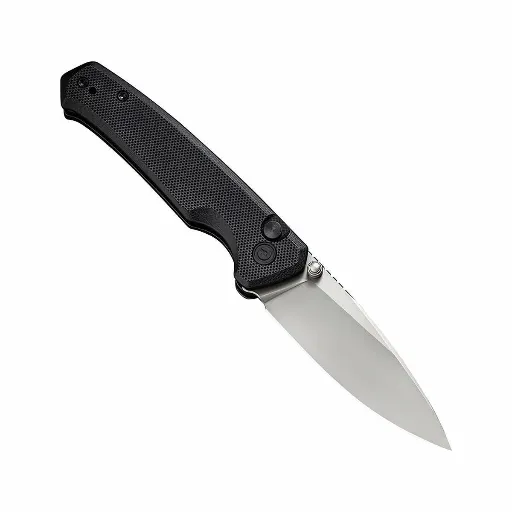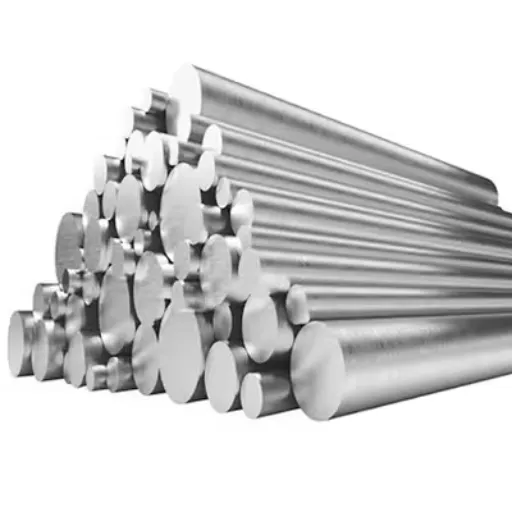Considering the right flatware for your home involves attention to detail, from its beauty to the maintenance and durability required, together with its functionality. Two types dominate the market for stainless steel cutlery: 18/0 and 18/10. What do these numbers mean, and how do they affect the quality and performance of your flatware? This article is aimed at discussing the most important differences between 18/0 and 18/10 stainless steel, focusing on composition, rust or corrosion resistance, shine, and durability. By the end, you will have an idea of which one of the two options fits you best. This guide is designed to help you make the right decision about whether the flatware is for daily use or special occasions.
What is the Difference Between 18/0 and 18/10 Stainless Steel?
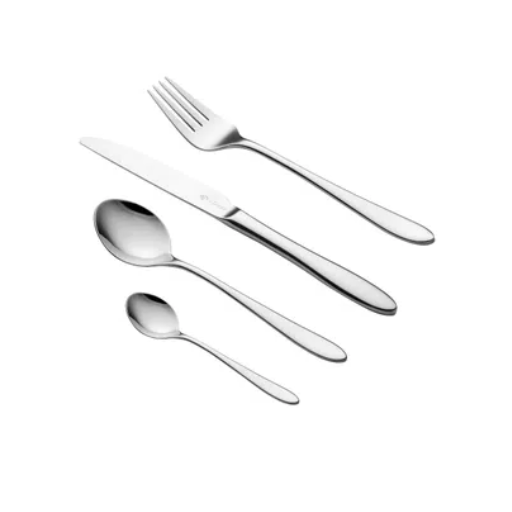
The difference between 18/0 and 18/10 stainless steel lies in the base of composition and properties. We look at the ratios of chromium and nickel that make up the alloy in question. 18/0 stainless steel has 18% chromium and 0% nickel, and 18/10 has 18% chromium and 10% nickel. Corrosion resistance and durability are the result of chromium, while nickel is credited with bolstering shine, rust, and strength.
The lack of nickel in 18/0 stainless steel makes it inexpensive and suitable for practitioners with nickel allergies or who are conscious about spending. Nevertheless, it does not resist corrosion as well, which means it can lose its luster over time. In contrast, 18/10 is the more expensive option, which is more durable, retains its luster, and is less prone to corrosion, making it ubiquitous for long-lasting,g high-quality flatware. In the end, it is for the consumer to prioritize budget, longevity, and allergens.
Understanding Stainless Steel Grades
If you wish to choose between types of stainless steel, like 18/0 or 18/10, it is important to highlight their content and characteristics first:
- What does 18/0 or 18/10 mean?
- These fractions correspond to the content of chromium and nickel ,and stainless steel. The first number is the percentage of chromium, the second is the percentage of nickel. Example:
- 18/0 has 18% of chromium and does not have any nickel
- 18/10 has 18% chromium and contains 10% nickel
- What are the technical differences?
- 18/0 Stainless Steel
- 18% chromium provides some resistance to rust, blight, and corrosion resistant steel.
- Hypoallergenic, which is helpful, because there’s no nickel.
- Stains or loss of shine in surface roughness occur more often due to less strength.
- 18/10 Stainless Steel
- Corrosion resistance, together with 10% nickel and 18% chromium, adds sturdiness.
- Enhances the robustness of the material, which adds luster and also polish.
- Premium grade flatware with increased polish and lifespan.
- Which grade is better for durability?
- Toughness of sustaining force, 18/10 stainless steel is best as it has longevity and polish, and is resistant to corrosion.
- Which works best for budget-picky buyers or people who are allergic to nickel?
- Due to low pricing and no nickel, 18/0 stainless steel is the best option.
Knowing these parameters allows you to decide based on the factors of price, durability, and even the specific requirements, like allergens.
The Role of Nickel and Chromium in Stainless Steel
Nickel and chromium are essential to the composition of stainless steel. Stainless steel would not be durable without nickel, which boosts strength, ductility, and resistance to high temperatures. Chrome increases the resistance of stainless steel to corrosion and rusting by applying a protective oxide layer. For buyers with tight budgets or a nickel allergy, I would suggest using 18/0 stainless steel.
How Does Nickel Content Affect Flatware Quality?
A very notable change to the quality of flatware is experienced from the nickel content. This is because it improves durability, resistance to corrosion, and even the gloss of the flatware. Based on my experience, flatware with higher amounts of nickel, such as 18/10 stainless steel (18% chromium, 10% nickel), is more resistant to pitting and staining, which makes it much more useful in the long run. On the contrary, lower nickel compositions, or nickel-free ones like 18/0 stainless steel, do not have the same level of luster or resistance but are cheaper and better for people who are sensitive to nickel. The technical specifications include the chromium to nickel ratio (18/10 or 18/8 is the mark of good quality flatware) and heat resistance, which is known to be higher if there is more nickel.
How Does Each Type of Stainless Steel Resist Corrosion?
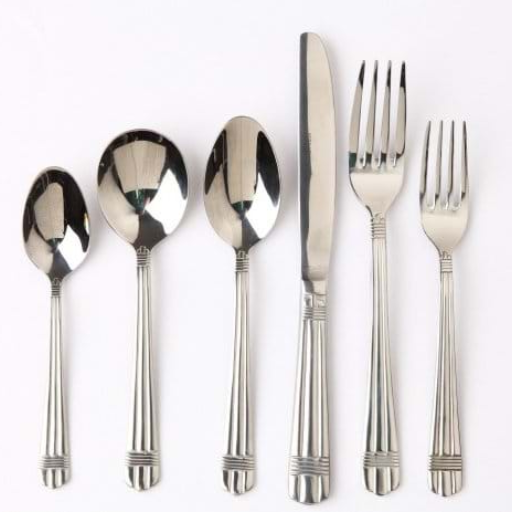
As chromium forms a passive oxide layer that protects the stainless steel from external damage and rust, the corrosion resistance of stainless steel is primarily defined by its chromium content. The resistance to corrosion of stainless steels like 18/10 and 18/8 is much higher than lower-grade alloys like 18/0 stainless steel. This is because the high nickel and high chromium alloys have a much more protective layer, are more durable, and therefore ideal for flatware and cookware. While 18/0 is still a type of stainless steel that will not rust due to its chrome content, it does not possess the strengthening benefits of nickel, making it prone to staining and wear over time, especially in harsh or humid environments.
Why is 18/10 Stainless Steel More Resistant to Corrosion?
The alloy’s chemical composition explains why 18/10 stainless steel has such high resistance to corrosion. The designation “18” means 18% of chromium is present, while “10” tells us that nickel accounts for 10% of the alloy. Chromium contributes to durability by forming passive oxide surfaces on stainless steel, which guard against rust and oxidation. However, nickel greatly increases this effect by fortifying the oxide by increasing steel’s durability towards acids, alkalis, harsh environmental conditions, and even oxidizing environments. These are the reasons why 18/10 stainless steel is highly durable and long-lasting even in difficult environments such as industrial kitchens.
Technical Resistance Parameters Of Stainless Steel 18/10:
- Chromium 16-20%: Increases corrosion resistance by creating an oxide film of a strong coating.
- Nickel 10%: endorses resistance against harsh and aggressive substances, adding to the stability of an oxide layer.
- Pitting Relistic Equivalency Number (PREN): 18-28 can be acquired dependent on other alloys and elements, do provides strength against localized corrosion.
- Corrosion Rate: Primary materials less than 0.1mm a year emphasize superior durability.
The outstanding strength properties and enduring resistance to corrosion sustain the alloy’s popularity in high-quality cookware, medical instruments, and tableware.
The Impact of Chromium Content on Corrosion Resistance
The content of chromium in alloys controls passive oxide corrosion, gives layers of protection, and enhances endurance. To the best of my knowledge, increased levels of chromium increase rust resistance while also making pitting less likely to happen. On the other hand, the exact balance of chromium needed relies heavily on the conditions of the surrounding environment and the needs of the alloy. As a rule of thumb, alloys composed of at least 10% to 12% chromium are enough to resist the basics of corrosion, though alloys with 16% or more do provide fortified levels of protection under harsher circumstances. The tradeoff achieves remarkable flexibility in a range of applications while retaining structural strength and reliability, making it favorable for use across various domains.
Which Grade of Stainless Steel Offers the Best Quality?
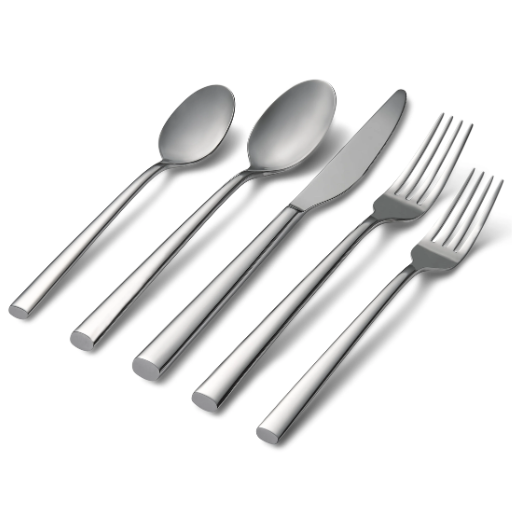
The resistance differs from one application to another, hence why the best quality of stainless steel has to be examined carefully. Some grades are constructed for particular needs, which makes using the right grade critical. For corrosion resistance and versatility, Grade 304 emerges as one of the most recommended options due to its high nickel and chromium content. In the marine or chemical industry, where structural integrity is needed, Grade 316 is favored as it comes with molybdenum, making it endure harsh environments, so its strength is superior. If increased heat and strength become a concern, then Grade 430 or duplex grades come into play. The environmental conditions and the functions that need to be fulfilled all have to be focused on to guarantee selection with optimal performance multifunctionally.
Comparing the Best Quality Features of 18/0 and 18/10
In my comparison of 18/0 and 18/10 stainless steel, the most apparent difference is the nickel content. 18/10 has 10% nickel, which makes it more resistant to corrosion and gives it a shinier finish. Conversely, 18/0 does not have any nickel, which makes it less resistant to rust but more affordable and magnetic, suitable for particular uses. If you prefer a durable yet elegant material, you’ll most likely lean toward 18/10. However, if you are more budget-conscious, need something magnetic, or less expensive, 18/0 is the better alternative. In the end, it all depends on what you have in mind and what your preferences are.
How Stainless Steel Used in Flatware Affects Durability
As far as stainless steel impacts the durability of the flatware, I would guess the variability of the type of steel is very crucial. Based on my research from credible sources, 18/10 stainless steel, with its nickel content, has very good polish and rust prevention because of its nickel holdings. It is the most durable choice and tends to resist everyday use quite well. On the contrary, 18/0 stainless steel is more affordable and lacks nickel, which inhibits corrosion resistance and encourages rust over time. Nonetheless, its magnetic properties may be advantageous for certain applications. In the end, the dependability of your flatware will depend on the grade of stainless steel you choose and the care you provide it.
which is better 18/0 or 18/10 stainless steel?
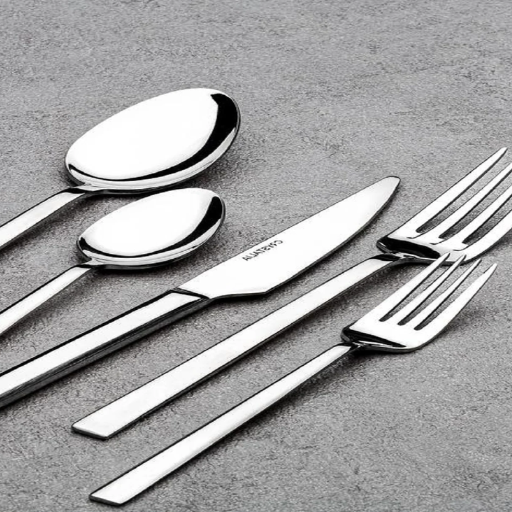
Your priorities will determine whether you go for 18/0 or 18/10 stainless steel.
- 18/10 Stainless Steel
- Composition: 10% nickel and 18% chromium.
- Advantages: Resistant to corrosion, durable, and shines brilliantly.
- Drawbacks: Usually, it costs more.
- 18/0 Stainless Steel
- Composition: 18% chromium and contains 0% nickel.
- Advantages: Low cost and magnetic, which is good for some purposes, like magnetic knife blocks.
- Drawbacks: Not as resistant to rust, corrosion, or as durable over time.
If you want good shine, durability, or corrosion resistance, then 18/10 would suit you best. But if you want to save money, have less durability and corrosion resistance, and have magnetic properties, then 18/0 would be more practical.
Assessing the Cost-Effectiveness of 18/10 Stainless Steel Flatware
To better understand the value of 18/10 stainless steel flatware in terms of cost-effectiveness, one must first appreciate how it is composed and its practicality in everyday use. An 18/10 stainless steel grade means that it contains 18% chromium and 10% nickel. This alloy is regarded as stainless because of its strength, resistance to tarnishing, and aesthetic beauty. Cost-effectiveness is analyzed through:
- Durability as it Relates to Longevity
The addition of nickel is essential as it increases the chances of a material being protected against rust and tarnishing wear over time. Cutlery pieces made from this grade of steel are subject to heavy use and ongoing washing and still retain their branding polish and added value. A good long-term investment.
- Aesthetic Appeal and Overall Appearance
The Polished and cared-for 18/10 flatware also ensures the maintenance of the luxurious luster due to its nickel content. All these factors make it suitable for formal dining and upscale events where aesthetics are essential.
- Resistance to Stains and Corrosion
The flatware does not need regular replacement like other lower grades of stainless steel because the chromium used forms a protective layer on the surface to guard against water, acidic food, or cleaning agents that tend to destroy lower-grade cutlery. This reduces the maintenance costs associated with replacing inferior stainless steel flatware frequently.
- Upfront Investment: Perhaps the Cost for Slow-Moving Flatware
Investing in 18/10 steel flatware is more of an initial investment than buying 18/0 or lower steel. Buying steel with lower grades means losing out on durability over time. For businesses or households that purchase flatware for long-term and frequent use, the initial cost makes more sense when considering the long-term. They will end up saving in the long run.
- Specifications Data Table
- Rust Resistance: For more than 500 hours when tested in salt spray testing, 18/10 steel shows high levels of corrosion resistance, which is superb for mounted steel.
- Hardness: Ranges from 48-52 HRC on the scale while having a melting point of approximately 1399 degrees Celsius or 2550 degrees Fahrenheit.
- Composition: Flatware made out of chrome with 18% reserve and 10% nickel, while the rest is slowly fed with iron.
Combining performance, aesthetic appeal, value, and long service term makes 18/10 steel a superb flatware choice over the years. Those looking for a blend of durability and its beauty find the flatware useful after paying an initially higher cost. These features allow the flatware to be put to long use without renewing avert adapting to switch over again.
Long-term Benefits of Investing in Quality Stainless Steel
For the case above, a reputable source of steel will not be a regrettable investment to make. Fewer replacements over time means more money spent, and resources wasted, depreciation from expenses. The lack of resistance to rust and corrosion guarantees its polish over time, even with heavy wear and tear. Not to mention, the low upkeep alongside being eco-friendly makes stainless steel a practical and sustainable option for any home or business.
How to Care for Stainless Steel Flatware to Prevent Rust?

Stainless Steel flatware is vulnerable to rust if care is not taken. To prevent this from happening, consider the following tips:
- Prompt Wash: To prevent corrosion, stains, or residue build-up, hollow utensils should be rinsed and washed immediately after use.
- Avoid Prolonged Moisture: Promptly drying the flatware after washing avoids moisture build-up, which can lead to rust.
- Opt for Gentle Detergents: The use of gentle dish soap is recommended. Strong abrasives and harsh chemicals are harmful to the finish.
- Store Properly: Ventilation is essential when storing the flatware in dry conditions. Extra protection is attainable through anti-tarnish strips.
- Occasional Polishing: For effective maintenance of the protective coating, polishing the steel occasionally is essential.
Adhering to these steps will ensure that the flatware remains in amazing condition, rust-free for many years to come.
Proper Cleaning Techniques for Dishwasher-Safe Flatware
In maintaining the shine and longevity of my dishwasher-safe flatware, I make sure to take a few specific steps. First, I place the sections of the flatware in the dishwasher with the handles facing down and put the different cuts in different compartments so that they do not scratch or tangle with each other. Mild and non-abrasive detergents are preferable, and I do not overfill, as this aids in even cleaning. Moreover, I use a gentle cycle and do not dry the flatware using the high-heat method, so that there is no risk of warping or discoloration. Once the cycle is complete, I promptly remove the flatware from the dishwasher while it is still moist and dry it with a soft cloth so that there is no risk of streaks or water spots. For some finishes, there are particular requirements when cleaning, so I ensure that I follow the manufacturer’s recommendations. These tips allow me to retain the longevity and enduring appeal of my flatware.
Preventing Rust and Corrosion in Stainless Steel Utensils Lifespan
To maximize the lifespan and performance of your stainless steel utensils, they must be properly cared for. Stainless steel utensils need attention to detail to prolong their lifespan and prevent rust or any form of corrosion. Here are a few recommendations from experts:
- Avoid Leaving the Utensils Wet
Rust away can steel chromium oxide layer that protects the steel beneath from enduring too much water. Always remember to dry the utensils as soon as they have been washed; at no point should water be able to settle on the surface of the utensils.
- Stay Away from Cleaning Chemicals
Avoid cleaning equipment containing strong acids, bleach, or chlorine, since they will destroy the coating surface of the utensils. Instead, use lukewarm water together with a mild dish soap, or if you want to use a cleaner, opt for one intended for use on stainless steel dishes.
- Be Careful When Using Hard Water
While the uses of hard water can be very useful, they come with negative side effects. The excessive use of hard water will cause weakness over time and leave residue. If you are on the toughened water system, there is the option of using a water softener, rinsing the dishes with filtered water, or, if using the normal tap, drying the utensils aggressively after they have been washed.
- Avoid High-Humidity Areas For Storage
Store stainless steel dishes and utensils in humid temperatures. Always maintain a consistent low humidity for the stainless steel vessels, as the combination of moisture and high temperature can cause severe harm to the utensils, such as rapid rusting.
- Prevent Utensils From Scratching
In order to stop stainless steel from potential oxidation, any scratches gown can cause oxidation; hence, one has to carefully select the equipment they use. Do not use abrasive sponges or cloths; use non-abrasive cleaning methods to retain the surface of the utensils.
- Defending Against Corrosion by Electropolishing
For maximum corrosion resistance, consider purchasing utensils that have undergone electropolishing. This is a process that smoothens and enhances the material’s surface.
Important Guidelines
- Chromium Content: For rust resistance, stainless steel should have not least 10.5% of chromium. Even higher amounts of chromium get better corrosion resistance, like in 18/10 grade, which has 18% chromium and 10% nickel.
- pH Safety Range: A pH of 6 to 8 is safe for cleaning baths without causing surface damage.
- Water Temperature for Washing: A maximum temperature of 140 degrees Fahrenheit (60 degrees Celsius) is recommended for dishwashing to avoid degrading finishes over time.
These practices, along with the other technical instructions, will help safeguard your stainless steel utensils against rust and corrosion.
References
- Flatware Buying Guide: 18/10, 18/0, Forged, Stamped & …
- Stainless Flatware Quality Differences
- 18/0 vs 18/10 Stainless Steel Flatware Discussion on Reddit
Frequently Asked Questions (FAQ)
Q: What is the main difference between 18/0 and 18/10 stainless steel flatware?
A: The main difference lies in the nickel content. 18/10 stainless flatware contains 18% chromium and 10% nickel, which enhances corrosion resistance and shine, making it a premium grade of flatware. In contrast, 18/0 stainless steel contains 18% chromium and 0% nickel, which makes it less expensive but also less resistant to corrosion.
Q: Why is nickel used in stainless steel flatware?
A: Nickel is used in stainless steel cutlery to enhance its corrosion resistance and provide a shiny, polished appearance. The presence of nickel, as seen in 18/10 stainless steel, contributes to the durability and aesthetic appeal of the flatware.
Q: Is 18/10 stainless steel cutlery better than 18/0?
A: Yes, 18/10 stainless steel cutlery is generally considered better due to its higher nickel content, which provides superior corrosion resistance and a more lustrous finish. It is often regarded as a quality flatware option compared to 18/0, which can be less durable.
Q: What are the advantages of using stainless steel flatware?
A: Stainless steel flatware offers several advantages, including durability, resistance to rust and staining, ease of maintenance, and an attractive appearance. It is also safe for use with food and does not react with acidic or alkaline foods.
Q: How do the different grades of stainless steel flatware affect its performance?
A: Different grades of stainless steel flatware, indicated by the percentages of chromium and nickel, affect its resistance to corrosion and shine. For example, 18/10 is a premium grade with better performance, while 18/0 may be more prone to rust and less lustrous but is typically more affordable.
Q: Can stainless steel flatware tarnish or rust over time?
A: While stainless steel cutlery is designed to resist tarnishing and rusting, lower grades like 18/0 may be more susceptible to these issues. Proper care, such as avoiding prolonged exposure to water and acidic foods, can help maintain the quality of the flatware.
Q: Is 18/10 stainless steel suitable for everyday use?
A: Yes, 18/10 stainless steel is highly suitable for everyday use due to its durability, resistance to corrosion, and ease of care. It is a popular choice for both casual and formal dining settings.
Q: What does “304” mean in the context of stainless steel flatware?
A: “304” refers to a grade of stainless steel commonly used in flatware and cookware. It contains 18% chromium and 8-10% nickel, which provides excellent corrosion resistance and durability, making it a popular choice for high-quality cutlery sets.
Q: How should I care for my stainless steel flatware to ensure longevity?
A: To ensure the longevity of stainless steel flatware, it is recommended to wash it promptly after use, avoid prolonged exposure to water and acidic foods, and dry it thoroughly to prevent water spots. Using a soft cloth for polishing can help maintain its shine.
Q: Are there any disadvantages to using 18/0 stainless steel flatware?
A: The primary disadvantage of using 18/0 stainless steel flatware is its lower resistance to corrosion compared to 18/10. This is due to the absence of nickel, which can make it less durable and prone to rust, especially in harsh environments or if not cared for properly.

